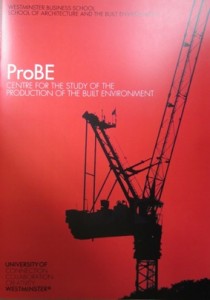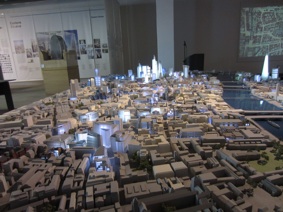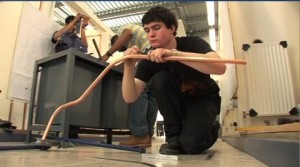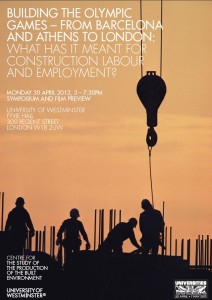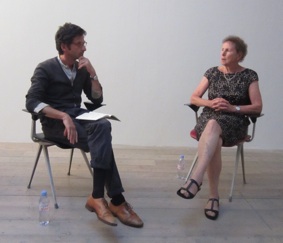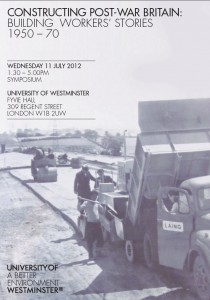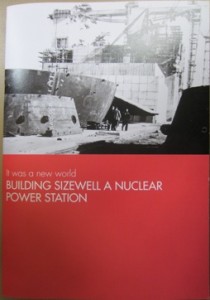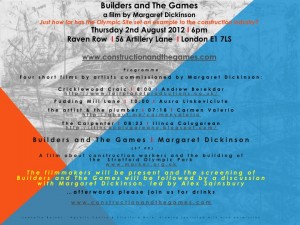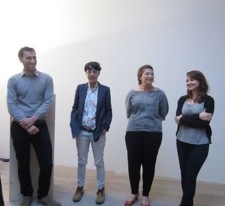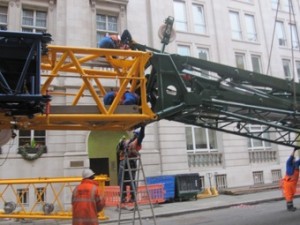OC 48: About the ‘City Makers’
This is about the unsung ‘makers of the city’: the builders who are erecting the visions of designers for lucrative earnings of investors and developers; those who are producing more or less open spaces for eventual users.
ProBE
The Centre for the Study of the Production of the Built Environment (ProBE) has been set up at Westminster University in 2010.
<http/::www.westminster.ac.uk:research:a-z:probe>. Affiliated to the European Institute for Construction Labour Research (CLR) <www.clr-news.org> ProBE consolidates a long history of international research in this field. Some of it draws on the work of BISS (Bartlett International Summer School which ceased activities after 17 annual events in 1995 but whose heritage lives on with CLR and INURA (The International Network of Urban Research) <www.inura.org>.
‘Wow-architecture’ obtains plenty of exposure (the latest being the London Festival of Architecture 2012 <www.lfa2012.org>).
Estate management firms are marketing its products worldwide (epitomised by MIPIM, the international real estate show for professionals <www.mipim.com>.
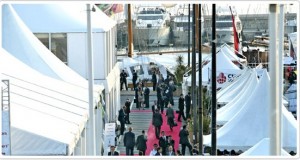
3_dia MIPIM 2012, largest international property fair in Cannes France, source http://www.mipim.com/en/mipim/prepare/harbour-access/
Conversely, very little appears in the public domain about those who are actually producing these buildings and related infrastructure. Their skills, their working conditions and their lifestyles are the focus of ProBE research.
Symposia
Two symposia put the results of recent ProBE research into the public domain. They brought together academics, and industry stakeholders from the employment and employee sides. The symposium about ‘Building the Olympic Games – from Barcelona and Athens to London’ was discussing construction employment and training legacy.
It focused on a film made by Margaret Dickinson on the London Olympic site, ‘Construction and the Games’ in cooperation with ProBE and was accompanied by a special issue of CLR News 2/2011: ‘Olympic sites: a celebration of Olympic values?’
The symposium on ‘Constructing Post-War Britain, Building Workers’ Stories’, funded by the Leverhulme Trust <www.leverhulme.ac.uk> was a debate about findings on the construction process of five diverse sites, ranging from a nuclear power station in Sizewell to the first leg of the M1 motorway, the new town Stevenage, the London South Bank cultural centre and a large scale mixed development, the Barbican in the City of London.
The Symposium made the case for the need of an archive of oral building history. The five monographs on the construction process on the selected building sites demonstrate the usually unrecorded richness of these experiences, with focus on labour relations, skill training and health and safety issues.
The film ‘Builders and the Games’ <www.constructionandthegames.com> was also projected in the new Raven Row gallery in London which aims “to test art’s purpose outside the market place”. <www.ravenrow.org>. It was accompanied by four short films, one on Irish building workers who reflect on the changes of their area, one on the cosmopolitan building workers who are hired on the Olympic sites in the Lea Valley, one on a female artist plumber and one on the fate of a migrant carpenter.
Need for knowledge of construction
What unites these various studies of the building industry is their originality. They encompass traditional academic studies and face to face debates, but also oral history, the use of a range of media and the direct involvement of diverse protagonists of the production of the built environment.
The construction sector constitutes a vital part of the national economy (9% of GDP) and reflects its dynamism or deficiency. Building tends to restart economic growth after a crisis but it also contributes critically to the pace and amplitude of economic fluctuation.
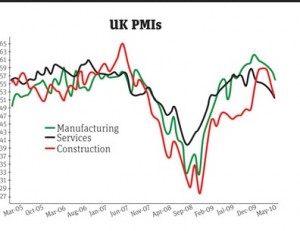
11_dia UK PMIs: Construction, manufacturing, services, source: http://www.newstatesman.com/economy/2010/09/construction-growth-recovery
The diversity of construction methods ranging from traditional to the most advanced technologies and the volatility of this labour intensive sector with the finite duration of building sites and their constantly changing locations affect its workers, their skill requirements, their safety and their living conditions generally. It is important therefore when studying cities and their openness to include the role and fate not just of visions by designers and real estate capital investment, but also the building process and those who are carrying it out.

